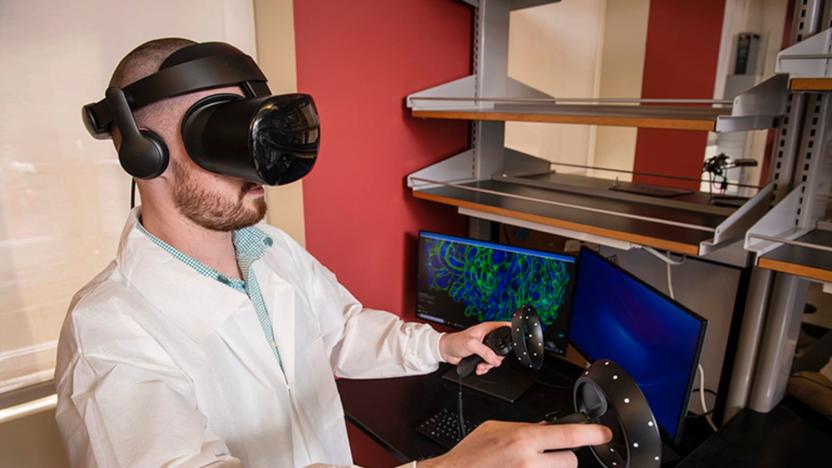biopsy
Latest

VR and microscopy help scientists see 'inside' diseases
You can only learn so much about cells by studying 2D pictures, and 3D microscope technology can produce an abundance of data that might be hard to decipher. Researchers at Carnegie Mellon University and Virginia Mason have an answer, though: let scientists walk 'inside' the cells. They've combined virtual reality with expansion microscopy (which grows samples by over 100 times) to explore cell data that would otherwise be too complex to handle. Once the cells have been imaged, labeled and compiled into data, a custom technique turns the 2D info into 3D environments.

New high-res imaging could make biopsies obsolete, doctors still cutting up in meantime
So maybe a true-to-life Innerspace is still a few years off, but a professor at the University of Rochester has developed a way to take high-resolution 3D images under the skin's surface, potentially eliminating the need for biopsies in cancer detection. Professor Jannick Rolland created a prototype that uses a liquid lens, in which a droplet of water replaces the standard glass lens, in conjunction with near-infrared light, to take thousands of pictures at varying depths. Those images are then combined to create clear, 3D renderings of what lies up to one millimeter below your epidermis. The method has already been tested on livings beings, but is likely a long way from making it to your doctor's office, which means it's off to the guillotine for that Pangaea-shaped mole you've been picking at.

Robot doctors join the fight against breast cancer
From Da Vinci robosurgeons to helpful nursebots , robots are becoming commonplace in hospitals the world over -- and now researchers at Duke University have developed a rudimentary tabletop robot that uses 3D ultrasound technology to detect a 'lesion' in a simulated sponge breast, pinpoint its exact location, and perform a biopsy. All the calculations are performed by the device itself, using what has been described as "a basic artificial intelligence program." The next step in the research will be an upgrade that will that the robotic arm from three-axis to six-axis capability, and a change from the old sponge-based simulated breast to one made from turkey breasts, which approximates the density of human breast tissue. According to Stephen Smith, director of the Duke University Ultrasound Transducer Group, if things stay on track, robots will be performing routine breast exams and biopsies in five to ten years. Video after the break.[Via PhysOrg]

CTC-chip isolates, analyzes rare tumor cells in bloodstream
Circulating tumor cells, which are more commonly referred to as CTCs, have thus far remained practically useless when it came to aiding in clinical decision making, but a new development could enable these rare cells to finally be used for guiding treatment. Reportedly, a crew of investigators from the Massachusetts General Hospital have crafted a "microchip-based device (dubbed CTC-chip) that can isolate, enumerate and analyze CTCs from a blood sample," which has the "potential to be an invaluable tool for monitoring and guiding cancer treatment." Additionally, researchers can look forward to "better understanding the biology of cancer cells and the mechanisms of metastasis," but there's still quite a bit of work to be done before the device can be put to clinical use.[Via Physorg]


